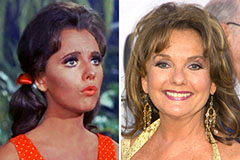Portrait painting is a fascinating art form that seeks to represent the very essence of a individual. Talented artists employ a variety of techniques to illustrate not only the physical characteristics but also the inner personality read more of their subjects. Through careful observation and a deep appreciation into human emotions, portrait painters produce works of art that are both faithful and thought-provoking.
A genuine portrait is more than just a representation; it's a portal into the mind of the person being depicted. Celebrated portrait painters over history have left behind a collection of masterpieces that continue to inspire viewers today.
Brushstrokes and Emotion: Unveiling the Soul Through Paint
A painting acts as more than just a visual depiction; it holds a world of feelings waiting to be uncovered. Each touch of the brush transmits a fragment of the painter's soul, connecting together vibrant hues to construct an emotional journey.
The sharpness of a line can communicate anger, while the fluidity of a sweep might hint at peace. Hue, too, plays a powerful role, triggering a range of emotions from delight to sorrow.
By analyzing these parts, we can begin on a quest to decode the artist's aspirations and, in consequently, gain a deeper understanding of the human condition.
Delving into Portraiture
A journey into portraiture goes far beyond the surface depiction of a person's physical features. It seeks to capture the spirit of a subject, unveiling their inner emotions. Portraiture is a remarkable instrument for artists to explore the human condition.
With the stroke of a brush or the click of a lens, portraiture facilitates us to connect with people on a significant level.
Peering into the Soul: Portraits as Windows to History
Portraits capture the essence of humanity across time. From classical civilizations to the modern era, artists have employed their skills to immortalize the human experience in paint, sculpture, and photograph. Each medium becomes a glimpse into the lives, thoughts, and emotions of those who sit.
- Examining these portraits unveils not only individual stories but also societal values and cultural shifts. They act as a permanent record of human emotion, allowing us to connect with the past and achieve a deeper appreciation of our shared heritage.
The Painted Gaze: Power and Presence in Portraiture
Portraiture has always been a fascinating arena/domain/stage where power and presence are inextricably linked. From the regal countenances/visages/features of monarchs to the unassuming/modest/simple expressions of everyday individuals/persons/folk, each painted gaze offers/presents/reveals a unique window into the dynamics/nuances/complexities of society/human interaction/the human condition.
The artist's/painter's/creator's skill in capturing not only the physical likeness but also the essence/spirit/character of their subject is what truly elevates/transforms/enhances a portrait from a mere depiction/representation/illustration to a powerful statement/reflection/work of art.
Through careful use of composition, light, and color, artists have employed the painted gaze to convey/communicate/express a range of emotions, from joy to sorrow, and to underscore/highlight/emphasize the status/position/rank of their subjects within society/their world/the hierarchy. A portrait can be a means of social commentary, reflecting the values/beliefs/ideals of the era in which it was created.
From Realism to Impressionism: The Evolution of Portrait Painting
Portrait painting underwent a significant transformation from the strictures of Realism to the free-flowing aesthetics of Impressionism. Realist artists, such as Gustave Courbet and Jean-Auguste-Dominique Ingres, sought to capture the world authentically, focusing on minute details and a lifelike depiction of their subjects. Their portraits often conveyed a sense of weighty contemplation.
In contrast, Impressionist painters like Edgar Degas and Pierre-Auguste Renoir embraced a more interpretive approach. They were less concerned with capturing precise details and instead sought to evoke the fleeting effects of light and color. Their portraits are marked with loose brushstrokes, vibrant hues, and a sense of movement. The shift from Realism to Impressionism reflected a broader cultural change, embracing new ideas about perception and the role of the artist.
 Jonathan Lipnicki Then & Now!
Jonathan Lipnicki Then & Now! Keshia Knight Pulliam Then & Now!
Keshia Knight Pulliam Then & Now! Barbi Benton Then & Now!
Barbi Benton Then & Now! Tina Louise Then & Now!
Tina Louise Then & Now! Dawn Wells Then & Now!
Dawn Wells Then & Now!